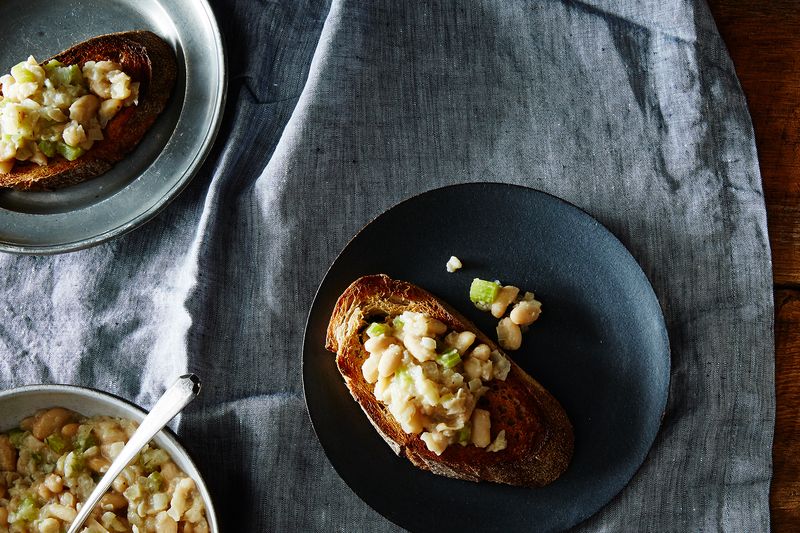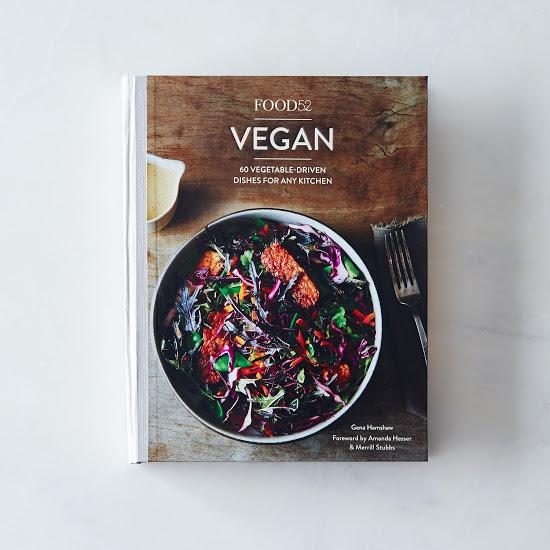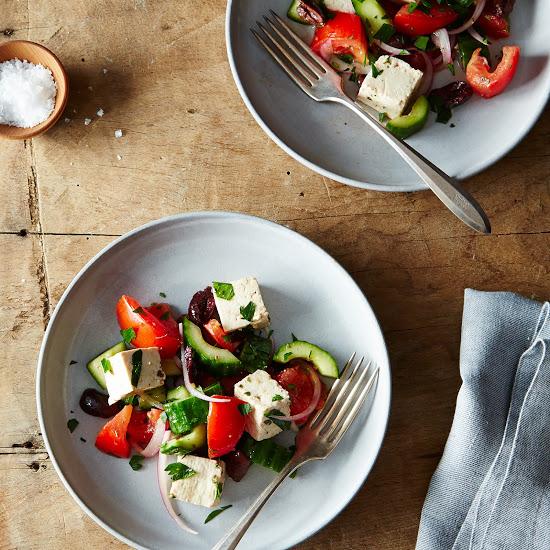Writing Food52's Vegan cookbook—on sale today!—didn't just teach me to cook vegan food: It taught me to cook.


My first article (on kale salad) vs. my most recent piece (on smothered beans)
When I was thinking about how writing Food52 Vegan differed from the day-to-day process of writing my blog, all of the obvious book versus blog distinctions came to mind.
First, cookbook writing requires precision, both with the ingredients and the serving sizes. Whereas it’s okay to say “I used a big fistful of kale” on a food blog, it won’t necessarily win you points as a cookbook author (or at least, it won’t make your copyeditor very happy).
And since my blog is more of a chronicle of the food I make and eat and love than an arena for formal recipe testing, my serving sizes aren’t always well planned. One recipe might serve 4 to 5, the next one 2 to 3. Writing Food52 Vegan was different: The recipes were created to serve 4 to 6, pretty much without exception. If my boyfriend and I polished off “4 servings” of a recipe in one sitting, it was time to retest.


And then of course, there’s the issue of range and scope. Food52 Vegan is an ode to the beauty and potential of plant-based food. It’s a declaration that anyone, anywhere can enjoy vegan dishes, because they’re colorful and flavorful and nutritious and fun—not because they fit a particular dietary label. To make good on this promise, I felt strongly that I should showcase a range of flavor profiles, a variety of whole grains and legumes, and a sampling of produce that spanned the seasons. When I write my blog, I may very well post four or five sweet potato or chickpea recipes in a row. You have to think a little more macroscopically for a book.
But I doubt that these distinctions are unique to my blog-to-cookbook transition. I suspect that most food bloggers who have gone on to write cookbooks would report similar findings.

What’s notable to me about the cookbook writing process is how far I’ve come since I started writing about food in 2009. At the time, I was a gung-ho vegan newbie (it had only been about two years), with almost no food experience behind me. My early blog posts are a reflection of both my passion and my inexperience.
I didn’t grow up cooking—no childhood memories of being in the kitchen with a matriarch who taught me her culinary secrets, no cherished family recipe box for me to inherit. I barely knew how to make pasta when I was twenty-five. I remember watching my roommate at the time prepare home-cooked Sunday dinners with a sense of awe and embarrassment.
When I went vegan, the lifestyle was less mainstream than it is now, and I realized quickly that I’d need to figure out how to cook my own food. I didn’t plan on falling in love with cooking in its own right, but that’s what happened. The story of my going vegan is also the story of my learning to cook.

When I look back on my earliest blog recipes, they are undeniably “me,” but they’re the most elemental version of me.
It’s my five favorite ingredients (avocado, sweet potato, zucchini, kale, bananas) and my two favorite seasonings (acid and salt) on loop. A great many recipes involved mashing up an avocado with lemon, salt, and herbs and smooshing it on top of something, whether that was zucchini noodles or toast or a salad. Like a lot of new cooks, I was timid with spices and cautious about stepping outside of my comfort zone. I hadn’t yet learned how to explore global cuisines or use unexpected flavor pairings. I didn’t often trust new ingredients—for example, I’d be willing to try quinoa in twenty different applications, but I was cautious when it came to less familiar grains (like sorghum or millet).
Having grown up a picky eater with a fairly limited repertoire of regular foods, it took me a long time to embrace all six of the six tastes, especially pungency. In fact, I’ve only really warmed up to alliums in the last few years.

When I flip through the pages of Food52 Vegan and I see a richly spiced kabocha and tofu curry, a spicy harissa mayonnaise, a garlicky miso soup, and a complex millet tagine with eggplant and preserved lemon, I see marks of my own growth as a home cook. (Not to mention perfectly crispy vegan biscotti from a self-declared non-baker!) The book feels like evidence of the landscape I’ve traveled in experimenting with new recipes, flavors, and techniques—as well as a tribute to the foods and dishes I’ve always known and loved.
Because as rewarding as it is to journey far and wide with cooking, it’s also great to come home. I’m glad that this collection is as diverse as it is, but I’m also glad that it boasts a lot of my favorite flavors (nutritional yeast, cashew cream, winter squash, lemon on everything).
And I’ll never get tired of mushed avocado.











See what other Food52 readers are saying.